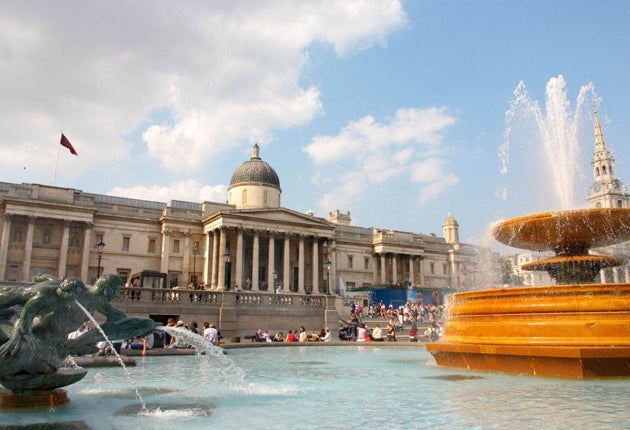Major museums blocked from using reserves totalling £285m

Your support helps us to tell the story
From reproductive rights to climate change to Big Tech, The Independent is on the ground when the story is developing. Whether it's investigating the financials of Elon Musk's pro-Trump PAC or producing our latest documentary, 'The A Word', which shines a light on the American women fighting for reproductive rights, we know how important it is to parse out the facts from the messaging.
At such a critical moment in US history, we need reporters on the ground. Your donation allows us to keep sending journalists to speak to both sides of the story.
The Independent is trusted by Americans across the entire political spectrum. And unlike many other quality news outlets, we choose not to lock Americans out of our reporting and analysis with paywalls. We believe quality journalism should be available to everyone, paid for by those who can afford it.
Your support makes all the difference.Tens of millions of pounds held in the reserve accounts of Britain's major museums – much of it donated by private donations and bequests – is frozen by the Treasury, despite the arts being in the midst of the biggest funding crisis in a generation.
The Department for Culture, Media and Sport (DCMS), acting under rules imposed by the Treasury, stipulates the net expenditure each year for the 20 major museums it funds. It also determines how much of their reserves they can access. This pot of money totals £285m across many of the country's most high-profile bodies, including the National Gallery and National Maritime Museum, but the organisations in question are being refused repeated requests to access it.
Most recently, the National Gallery and the National Maritime Museum have been refused requests to access their significant reserve monies by the DCMS, according to an investigation published in The Art Newspaper. "One of the consequences of major museums being non-departmental public bodies is that they must adhere to Treasury guidelines," said Michael Dixon, chairman of the National Museum Directors' conference. "This goes back to accounting regulations introduced in 2000 by Government,"
In 2008, the National Maritime Museum trustees voted to spend £3.5m from its own reserves on gallery refurbishments, but this was subsequently blocked by the DCMS. Minutes from a trustee meeting in September of that year said that "with no access to its reserves, the museum will not be able to deliver the exhibitions or gallery renewal it has planned".
The museum's managers said the new freeze was of "great concern, as it significantly reduces their own independence as trustees and may well deter donors". They also called the Treasury a "shadow trustee".
DCMS reportedly then agreed to allow the museum to spend just £300,000 in the current financial year out of £3.5m earmarked for gallery refurbishment. Although the comprehensive spending review increased the proportion of reserves that museums could access to 50 per cent, according to The Art Newspaper there was still confusion over the rules surrounding the National Gallery's campaign to purchase Titian's 1556-59 Diana and Actaeon.
Initially, the Treasury ruled that the gallery could not use its reserves, before internal accounting at DCMS eventually allowed the purchase to take place.
The National Gallery played down its inability to access its own coffers, saying that "much of [our] income is either restricted to particular activities by the wishes of the donor, or designated by the trustees for future picture purchases".
A spokeswoman added: "Access to museum reserves is restricted by government accounting rules. This effectively means that museums have had to get permission from their sponsor department in order to spend from their reserves." A spokesman for the DCMS said: "We will be providing our national museums with the freedom to access up to £150m of their historic reserves over the next four years.
"This is an important step towards delivering on the Coalition commitment to providing greater administrative freedoms for national museums and will, we hope, encourage the museums to renew their efforts to attract further philanthropic donations."
Join our commenting forum
Join thought-provoking conversations, follow other Independent readers and see their replies
Comments